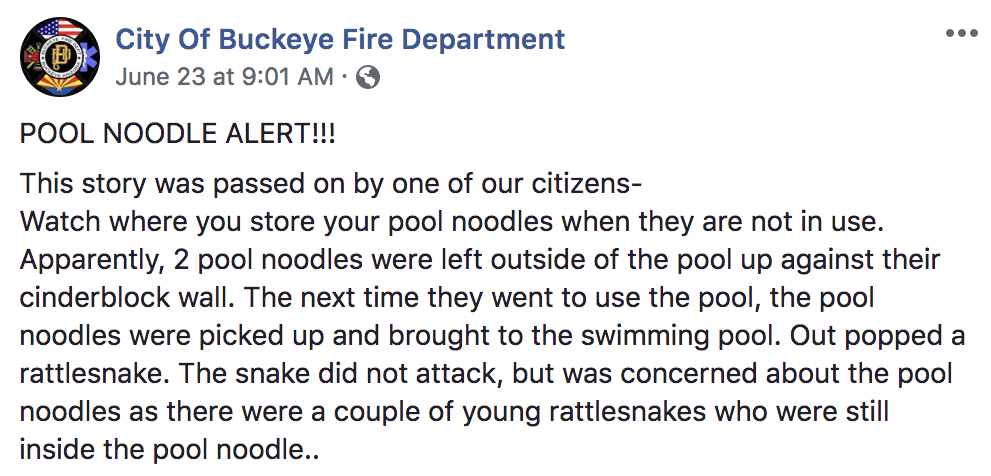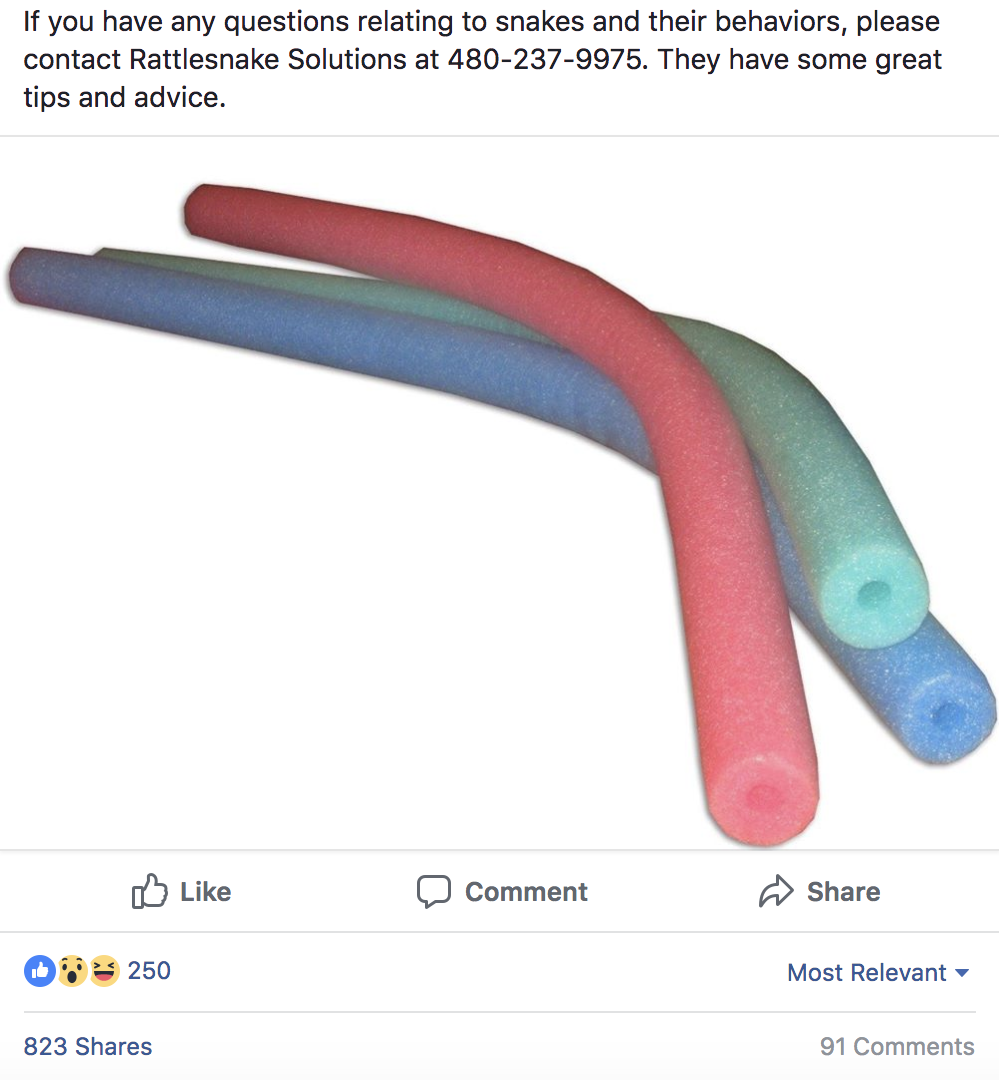
Pack it up, folks: Summer 2018 is officially a no-go thanks to a viral Facebook post written by a fire department in the Phoenix, Arizona, area.
"POOL NOODLE ALERT!!!" the City of Buckeye Fire Department cautioned its followers over the weekend.
"Watch where you store your pool noodles when they are not in use," the post read. "Apparently, 2 pool noodles were left outside of the pool up against their cinderblock wall. The next time they went to use the pool, the pool noodles were picked up and brought to the swimming pool. Out popped a rattlesnake."
Umm.
To make matters worse, the rattler wasn't alone: After it slithered out, "there were a couple of young rattlesnakes who were still inside the pool noodle," the fire department added.
When you think about it, it sort of makes sense that a snake would crawl inside a pool noodle: The popular foam floaties are shaped perfectly for a snake, and they probably make for a cozy, cool refuge on the hottest of summer days. But is a world where pool toys are filled with serpents really the kind of world in which we'd all like to live? (Spoiler alert: No.)
Keep scrolling to read the rest of the Buckeye Fire Department's post and find out how people reacted to it…

"The rattlesnake kind of fell to the ground, looked around, and slithered away under a bush," Buckeye fire chief Tommy Taylor told People in a recent interview.

Finding snake eggs inside or near pool noodles isn't unheard of, either, Chief Taylor added.
If you come into contact with a snake, remember to stay calm.

Emily Taylor (no relation), a biological sciences professor at California Polytechnic State University and rattlesnake expert, told People that the worst thing you can do after stumbling upon a snake is try to grab it with your bare hands.

"No one should ever attempt to handle a rattlesnake with their hands," Emily said. “Most bites occur when people try to handle a rattlesnake.”

If left untreated, a rattlesnake bite "can be very dangerous," Emily added — but "a rapid visit to the ER can typically save an envenomated person."

According to Emily, about 8,000 people in the US are bitten by venomous snakes (including rattlesnakes) every year, but only about five people die from said bites.
The fire department shared photo proof of the sneaky snake in the post's comments section.

It's a little snake, but a snake nonetheless.

Greyson Getty, a professional snake relocator based in the Phoenix area, told ABC 15 that the snakes were likely hiding in the pool noodles because of the "ungodly hot" weather.

Makes sense! So how do you make them not do that?
"Anything that a snake or a rodent can hide under, try to eliminate it," Greyson said. "Try to keep everything neat and tidy."

A snake fence might be worth investing in, too: "Prevent their food, prevent their water, and prevent them from even being able to get in," Greyson added.
The Buckeye Fire Department's post has racked up dozens of comments since it went live last Saturday.

Some people (jokingly) recommended taking drastic measures to prevent snake-inside-pool-noodle sightings.

Others encouraged local residents to work on reducing the local rodent population — many snakes' food of choice.
Snakes aren't the only critters people have found in pool noodles, apparently.

It's a firm NOPE from me.
Stay safe out there, people!

Click here to learn about the venomous snakes that might be living in your area — and how to protect your family from them.




